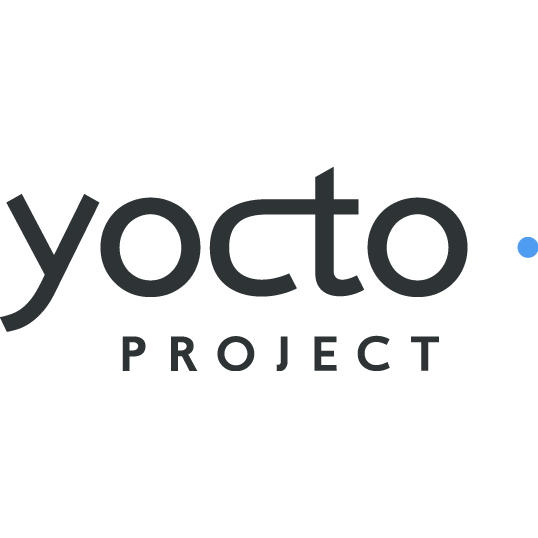SPEAR-MX8: Difference between revisions
From Variscite Wiki
No edit summary |
No edit summary |
||
| Line 66: | Line 66: | ||
|content= | |content= | ||
;Bullseye (kernel 5.4.142) | ;Bullseye (kernel 5.4.142) | ||
* [{{#var:RELEASE_NOTES_PAGE}}&release= | * [{{#var:RELEASE_NOTES_PAGE}}&release=mx8-debian-bullseye-5.4-2.1.x-v1.2 Release Notes] | ||
* {{Varlink|Debian_Build_Release| | * {{Varlink|Debian_Build_Release|mx8-debian-bullseye-5.4-2.1.x-v1.2|Developers Guide}} | ||
<br> | <br> | ||
;Buster (kernel 4.14.98) | ;Buster (kernel 4.14.98) | ||
| Line 74: | Line 74: | ||
<br> | <br> | ||
;Development | ;Development | ||
* {{Varlink|Debian Recovery SD card| | * {{Varlink|Debian Recovery SD card|mx8-debian-bullseye-5.4-2.1.x-v1.2|'''Recovery SD card'''}} | ||
}}<!-- | }}<!-- | ||
| Line 80: | Line 80: | ||
|content= | |content= | ||
;Boot2Qt Dunfell (Qt 6.0.4, kernel 5.4.142) | ;Boot2Qt Dunfell (Qt 6.0.4, kernel 5.4.142) | ||
* [{{#var:RELEASE_NOTES_PAGE}}&release= | * [{{#var:RELEASE_NOTES_PAGE}}&release=mx8-b2qt-dunfell-5.4-2.1.x-v1.2 Release Notes] | ||
* {{Varlink|VAR-SOM-MX8_B2QT| | * {{Varlink|VAR-SOM-MX8_B2QT|mx8-b2qt-dunfell-5.4-2.1.x-v1.2|Developers Guide}} | ||
<br> | <br> | ||
;Boot2Qt Sumo (Qt 5.12.9, kernel 4.14.98) | ;Boot2Qt Sumo (Qt 5.12.9, kernel 4.14.98) | ||
| Line 88: | Line 88: | ||
<br> | <br> | ||
;Development | ;Development | ||
*{{Varlink|Yocto Recovery SD card| | *{{Varlink|Yocto Recovery SD card|mx8-b2qt-dunfell-5.4-2.1.x-v1.2|'''Recovery SD card'''}} | ||
}}<!-- | }}<!-- | ||
Revision as of 00:49, 7 July 2022
SPEAR-MX8
Supporting NXP's i.MX 8QuadMax, the SPEAR-MX8 allows designers to use a single System on Module in a broad range of applications to achieve short time-to-market for their current innovations, while still accommodating potential R&D directions and marketing opportunities. This highly scalable SoM is an ideal solution for embedded products requiring advanced performance processing, high-end graphics, Ultra HD video capabilities and a variety of high-speed interfaces and connectivity options, such as USB3, CAN FD, and many more.
- Register at the Variscite Customer Portal to get high quality engineering support for this product.
 Subscribe to the Atom feed of the relevant software package to get the latest updates.
Subscribe to the Atom feed of the relevant software package to get the latest updates.
Yocto <rssbutton height=20 width=20>https://github.com/varigit/variscite-bsp-platform/releases.atom</rssbutton>
- Hardknott (kernel 5.10.72)
- Dunfell (kernel 5.4.142)
- Zeus (kernel 5.4.3)
- Sumo (kernel 4.14.98)
- Development
Android <rssbutton height=20 width=20>https://github.com/varigit/MX6x-android/releases.atom</rssbutton>
- Android 11.0.0_1.0.0 (kernel 5.4.47)
- Android 10.0.0_2.5.0 (kernel 5.4.47)
- Pie 9.0.0_2.0.0 (kernel 4.14.98)
- Development
Debian <rssbutton height=20 width=20>https://github.com/varigit/debian-var/releases.atom</rssbutton>
- Bullseye (kernel 5.4.142)
- Buster (kernel 4.14.98)
- Development
Boot2Qt <rssbutton height=20 width=20>https://github.com/varigit/meta-variscite-boot2qt/releases.atom</rssbutton>
- Boot2Qt Dunfell (Qt 6.0.4, kernel 5.4.142)
- Boot2Qt Sumo (Qt 5.12.9, kernel 4.14.98)
- Development
FreeRTOS <rssbutton height=20 width=20>https://github.com/varigit/freertos-variscite/releases.atom</rssbutton>
- MCUXpresso 2.9.0
- MCUXpresso 2.8.0
- MCUXpresso 2.5.2
Specs summary
| CPU | NXP i.MX 8QuadMax / 8QuadPlus: 2 / 1 × Cortex™-A72 1.8GHz 4 × Cortex™-A53 1.2GHz 2 × Cortex™-M4F 266MHz |
| Memory | Up to 8GB LPDDR4 |
| GPU | 2 × Vivante™ GC7000/XSVX (8QuadMax) 2 × Vivante™ GC7000Lite/XSVX (8QuadPlus) |
| Display | HDMI v2.0a up to 4Kp60, eDP/DP, LVDS Dual channel up to 1080p60 |
| Storage | eMMC up to 64GB, SD card |
| Network | Ethernet: 2 × 10/100/1000 Mbps, WiFi: Certified 802.11 a/b/g/n/ac, Bluetooth: 5.2, BLE |
| RTC | On carrier |
| I2C | ×4 |
| SPI | ×4 |
| CAN bus | {{{can}}} |
| UARTs | ×5 |
| USB | 1 × USB 3.0 USB Type C, 1 × USB 2.0 OTG, 1 × USB HSIC |
| Audio | Headphone, Digital/Analog stereo Microphone, I2S(SAI), SPDIF, Line In/Out |
| Temperature Range | -40 to 85°C |
| Dimensions | 55.0mm × 68.0mm |





